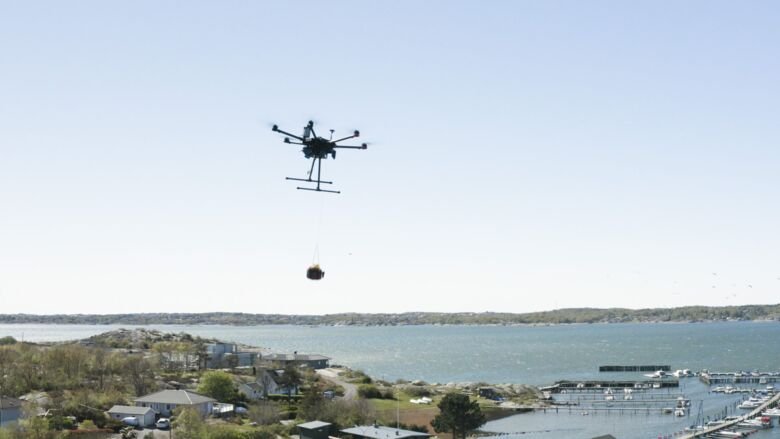Drones enabled the use of defibrillators before ambulance arrival

Researchers at Karolinska Institutet have evaluated the possibility of alerting drones equipped with automated external defibrillators (AED) to patients with suspected cardiac arrest. In more than half of the cases, the drones were ahead of the ambulance by an average of three minutes. In cases where the patient was in cardiac arrest, the drone-delivered defibrillator was used in a majority of cases. The results have been published in the journal The Lancet Digital Health.

"The use of an AED is the single most important factor in saving lives. We have been deploying drones equipped with AED since the summer of 2020 and show in this follow-up study that drones can arrive at the scene before an ambulance by several minutes. This lead time has meant that the AED could be used by people at the scene in several cases," says Andreas Claesson, associate professor at the Center for Cardiac Arrest Research at the Department of Clinical Research and Education, Södersjukhuset, Karolinska Institutet, and principal investigator of the study.
Every year, around 6,000 people in Sweden suffer a sudden cardiac arrest, but only a tenth of those affected survive. Although an early shock with a AED can dramatically increase the chance of survival and there are tens of thousands of AED in the community, they are not available in people's homes where most cardiac arrests occur.
To shorten the time to defibrillation with an AED, Karolinska Institutet, together with Region Västra Götaland, SOS Alarm and the drone operator Everdrone, has since 2020 tested the possibility of sending out a drone with a AED at the same time as an ambulance is alerted.
The project covered an area of approximately 200,000 people in western Sweden. An initial study conducted in the summer of 2020 in Gothenburg and Kungälv showed that the idea was feasible and safe.

"This more comprehensive and follow-up study now shows in a larger material that the methodology works throughout the year, summer and winter, in daylight and darkness. Drones can be alerted, arrive, deliver AED, and people on site have time to use the AED before the ambulance arrives," says Sofia Schierbeck, PhD student at the same department and first author of the study.
The emergency center gave instructions
In the study, drones delivered an AED in 55 cases of suspected cardiac arrest. In 37 of these cases, the delivery took place before an ambulance, corresponding to 67 percent, with a median lead of 3 minutes and 14 seconds.
In the 18 cases of actual cardiac arrest, the caller managed to use the AED in six cases, representing 33 percent. A shock was recommended by the device in two cases and in one case the patient survived.
"Our study now shows once and for all that it is possible to deliver AED with drones and that this can be done several minutes before the arrival of the ambulance in connection with acute cardiac arrest," says Andreas Claesson. “This time saving meant that the healthcare emergency center could instruct the person who called the ambulance to retrieve and use the AED in several cases before the ambulance arrived."
The research was mainly funded by the Swedish Heart-Lung Foundation.
Publication
"Drone delivery of automated external defibrillators compared with ambulance arrival in real-life suspected out-of-hospital cardiac arrests: a prospective observational study in Sweden", Sofia Schierbeck, A Nord, L Svensson, M Ringh, P Nordberg, J Hollenberg, P Lundgren, F Folke, M Jonsson, S Forsberg, A Claesson, The Lancet digital health, online November 23, 2023, doi: 10.1016/S2589-7500(23)00161-9
